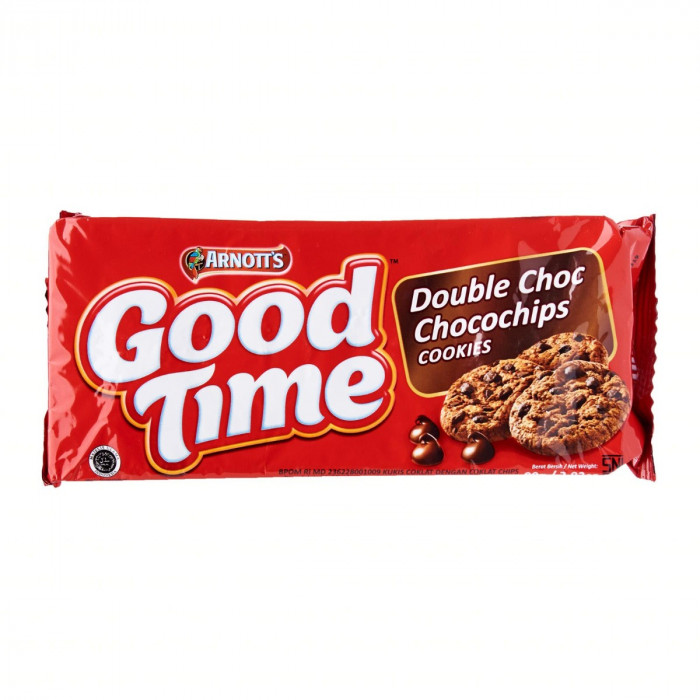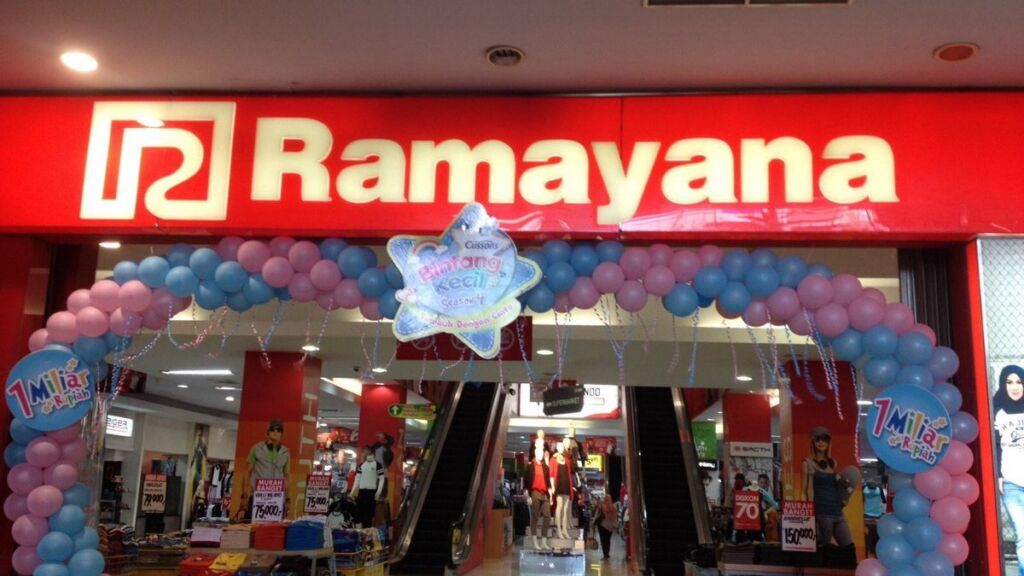Indonesia is a vibrant market renowned for its diverse palate and deep appreciation for both traditional and modern flavors. Among the many snack options available, cookies hold a special place in Indonesian households, often enjoyed with tea or coffee during gatherings or as a quick treat. One prominent brand that has established a strong presence in Indonesia is Arnott’s, particularly with its iconic Good Time cookies. Known for their crisp texture, sweet flavor, and nostalgic appeal, Arnott’s Good Time cookies have become a staple in many Indonesian homes. This article explores the rich history, production standards, flavors, and market dynamics of Arnott’s Good Time cookies in Indonesia, offering insight into how this Australian-origin brand has become a beloved snack across the archipelago.
The History and Heritage of Arnott’s in Indonesia
Arnott’s, an Australian-founded biscuit company with over 150 years of history, first expanded its reach into international markets in the mid-20th century. Its entry into Indonesia occurred in the late 20th century, as part of its broader strategy to establish a presence in Southeast Asia. Over the decades, Arnott’s adapted its products to suit local tastes, which facilitated its widespread acceptance among Indonesian consumers. The brand’s commitment to quality and consistency helped it carve out a significant market share in the competitive snack industry.
In Indonesia, Arnott’s quickly became associated with trust and reliability, owing to its longstanding heritage. The company’s local manufacturing plants and distribution networks ensured that its products remained fresh and accessible across urban and rural areas alike. The brand also engaged in localized marketing campaigns, often emphasizing themes of family, tradition, and shared moments—values deeply resonant with Indonesian culture. Over time, Arnott’s has maintained its reputation as a premium yet affordable biscuit brand, appealing to a broad demographic spectrum.
The Good Time line, introduced as part of Arnott’s diverse product portfolio, was tailored to meet the preferences of Indonesian consumers. Its sweet, buttery taste and crisp texture aligned well with local snacking habits. The brand’s heritage of quality and innovation continues to influence its product development, ensuring that Arnott’s remains relevant in Indonesia’s dynamic snack market.
Throughout its history in Indonesia, Arnott’s has also engaged in corporate social responsibility initiatives, supporting local communities and sustainability efforts. This commitment has strengthened its brand loyalty and fostered a positive image among Indonesian consumers. The brand’s heritage, combined with its adaptive strategies, underscores its enduring popularity and significance in Indonesia’s snack industry.
As Arnott’s continues to evolve, its historical roots and local engagement remain central to its identity in Indonesia. The brand’s journey reflects a successful blend of international expertise and local adaptation, securing its position as a trusted name in Indonesian households.
Key Ingredients and Quality Standards of Arnott’s Good Time
Arnott’s Good Time cookies are crafted with a focus on quality ingredients that ensure both flavor and safety. The primary components include wheat flour, sugar, vegetable fats, and milk solids, which contribute to the cookie’s rich, buttery taste and satisfying crunch. The use of high-quality wheat flour is essential for achieving the desired texture, while the inclusion of real milk solids enhances the flavor profile, making the cookies indulgent yet balanced.
In addition to core ingredients, Arnott’s adheres to strict quality standards that comply with both Australian and Indonesian food safety regulations. The manufacturing process emphasizes hygiene, precise mixing, and controlled baking temperatures to ensure uniformity and freshness. The use of preservative-free formulations in many of its products aligns with increasing consumer demand for healthier snack options, although some variants may contain preservatives to extend shelf life.
The brand sources its ingredients from reputable suppliers, prioritizing non-GMO and sustainable sources whenever possible. This commitment to quality extends to the packaging—designed to protect the cookies from moisture and contamination, maintaining their crispness and flavor during distribution and storage. Regular quality checks and audits are conducted throughout the production process to uphold the high standards that Arnott’s is known for.
Furthermore, Arnott’s invests in research and development to improve ingredient quality and product safety continuously. The company also considers local preferences and dietary restrictions, offering options that cater to various consumer needs, including halal-certified products in Indonesia. These meticulous standards underscore the brand’s dedication to providing enjoyable, safe, and high-quality cookies to its Indonesian consumers.
Overall, the combination of premium ingredients and rigorous quality control processes ensures that Arnott’s Good Time cookies remain a trusted and beloved snack across Indonesia. The brand’s emphasis on quality is a cornerstone of its long-standing reputation and consumer loyalty.
Unique Flavors and Variations of Arnott’s Good Time Cookies
While the classic Arnott’s Good Time cookies are renowned for their simple, sweet, and buttery flavor, the brand has introduced several variations to cater to diverse tastes in Indonesia. These variations include chocolate-flavored, caramel-infused, and mini-sized versions, each designed to offer a different snacking experience while maintaining the core qualities of crispness and sweetness.
The chocolate variant, for example, combines the familiar buttery biscuit base with a rich chocolate coating or filling, appealing to consumers seeking a more indulgent treat. The caramel version features a sweet caramel layer that adds depth and richness, making it a popular choice during festive seasons or special occasions. Mini-sized Good Time cookies are also available, providing a convenient snack option that is perfect for on-the-go consumption or sharing among families and friends.
In addition to flavor modifications, Arnott’s occasionally introduces limited-edition or seasonal flavors to keep the product lineup fresh and engaging. These may include local-inspired flavors or collaborations with other brands, aimed at capturing consumer interest and encouraging trial. The company also offers variants that cater to health-conscious consumers, such as reduced sugar or low-fat options, aligning with changing dietary trends.
The variations of Arnott’s Good Time cookies are often marketed as part of special promotions or bundled packages, especially during major Indonesian holidays like Eid, Christmas, or Independence Day. These diverse options allow consumers to select flavors that suit their personal preferences or occasions, enhancing the brand’s versatility and appeal across different demographic groups.
Overall, Arnott’s commitment to innovation and variety ensures that Good Time cookies remain relevant and attractive in Indonesia’s competitive snack market. By offering a range of flavors and formats, the brand continues to meet the evolving tastes and preferences of Indonesian consumers.
The Manufacturing Process Behind Arnott’s Good Time
The manufacturing of Arnott’s Good Time cookies involves a meticulous process that emphasizes quality, hygiene, and efficiency. The process begins with sourcing premium ingredients, which are carefully inspected upon arrival to ensure compliance with quality standards. The ingredients are then blended in large industrial mixers to create a uniform dough that forms the base of the cookies.
Once the dough is prepared, it is rolled out to a specific thickness and cut into the characteristic rectangular or square shapes using high-precision cutting machines. The cut dough pieces are then transferred to baking trays and baked in ovens with carefully controlled temperature and humidity settings. This precise control ensures the cookies develop their signature crispness and golden-brown appearance.
After baking, the cookies move through a cooling conveyor where they are cooled to optimal temperature to prevent moisture retention. The cooling process is crucial to achieving the desired texture and shelf stability. Depending on the product variant, the cookies may undergo additional processes such as coating, filling, or packaging at this stage.
Subsequently, the cookies are packaged in airtight, moisture-proof packaging to preserve freshness and extend shelf life. The packaging process is automated and subject to rigorous quality checks to prevent contamination or defects. The final products are then labeled, palletized, and prepared for distribution to various retail outlets across Indonesia.
Throughout the manufacturing process, Arnott’s employs advanced quality assurance protocols, including regular sampling and testing for microbial safety, ingredient consistency, and sensory attributes. This comprehensive approach guarantees that each batch of Good Time cookies meets the brand’s high standards and delivers the same enjoyable experience to consumers every time.
The combination of advanced technology, strict quality control, and skilled craftsmanship underpins the reliability and excellence of Arnott’s Good Time cookies, making them a trusted snack across Indonesia.
Distribution Channels and Availability Across Indonesia
Arnott’s Good Time cookies are widely distributed throughout Indonesia, ensuring accessibility for consumers in both urban centers and rural areas. The brand leverages a multi-channel distribution network that includes large retail chains, supermarkets, convenience stores, traditional markets, and online platforms. This extensive reach allows Arnott’s to cater to a diverse consumer base with varying shopping preferences.
In urban areas such as Jakarta, Surabaya, Bandung, and Medan, the cookies are prominently displayed in supermarket aisles and dedicated biscuit sections, often accompanied by promotional displays. These locations facilitate easy access for consumers seeking quick snacks or ingredients for family gatherings. The brand also partners with convenience store chains like Alfamart and Indomaret, ensuring the product’s availability in smaller, more accessible outlets.
In rural and less-developed regions, Arnott’s collaborates with local distributors and wholesalers to ensure the cookies reach remote communities. Traditional markets and small retail shops are also key points of sale, often serving as the primary source of snacks for local populations. The company’s investment in a robust distribution infrastructure helps maintain product freshness and availability across the archipelago.
Moreover, the rise of e-commerce has further expanded Arnott’s Good Time’s reach in Indonesia. Consumers can purchase the cookies through online grocery platforms, official brand websites, and marketplaces like Tokopedia and Shopee. This digital presence caters to the increasing demand for convenient shopping options and provides access to a broader demographic.
Overall, Arnott’s strategic distribution approach ensures that Good Time cookies are readily available and visible across Indonesia, reinforcing its position as a household favorite. The brand’s commitment to widespread availability supports continued growth and consumer loyalty in a competitive snack market.
Consumer Reception and Popularity of Arnott’s Good Time
Arnott’s Good Time cookies have enjoyed enduring popularity among Indonesian consumers, appreciated for their consistent quality, appealing taste, and nostalgic value. Many families consider them a staple snack, often served during tea or coffee breaks, family gatherings, or festive celebrations. The cookies’ familiar flavor and texture evoke










